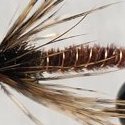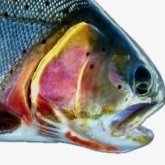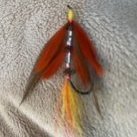-
Content Count
2,976 -
Joined
-
Last visited
Community Reputation
0 NeutralAbout chugbug27
-
Rank
Advanced Member
- Birthday 03/17/1964
Previous Fields
-
Favorite Species
Ennie Trouteldoo
-
Security
22
Profile Information
-
Location
New Orleans, Louisiana
Recent Profile Visitors
19,179 profile views
-
Btw, a 3x2 patch of muskrat will set you back three bucks and if only used for dry flies might outlast both you and your grandchildren.
-
Now that is a perfect wing tie-in, married or not. Envy is erupting through my eye sockets.
-
Deleted some threads, was at 100%, should work now.
-
How is WFC after the new owner?
-
+1 re just a wisp of dubbing and making a long, thin tapered body. Orvis says its Rusty Parachute is designed as a spinner imitation, just fwiw. https://news.orvis.com/fly-fishing/tying-the-rusty-parachute-hendrickson If you want to split the tails for the sake of tradition and imitation, leave your tag end of the tying thread on. After tying the tails in, take your tag end up through the tails, half on one side, half on the other. Pull until your tails split and tie it in. Just one method of many, but this method is easy. Note that the Orvis pattern doesn't split the tails, again fwiw. Orvis uses black thread on this one, but with a thinly dubbed body a thread color closer to your dubbing color will help maintain that color when wet. (Black thread will darken your thinly applied rust dubbing when wet.) if you want a black head, you can switch thread for the head, or use a black marker, or a thin layer of acrylic paint. If you want the marker to last use a thin coat of uv glue over the head after marking to seal it in. Not sure if regular head cement would do the same thing. Your parachute hackle looks thin and uneven. See the Orvis photo for its density. To improve it you need to make smooth thread wraps up and down the post (it can help to untwist your thread for this), and then wrap your hackle close together going down the post -- without twisting it. Parachutes are not so easy on a #16 hook. Seriously Try it a few times on a #14 or even a #12 until you get the hang of it better, then the #16 will come to you easier. All those sizes should work at one time or another.
-
Re-found.... George Grant used tapered nylon filaments from DuPont Tynex paintbrushes... And wrote about it in 1971
-
That's what I've got, works great; you can still get them from China on eBay for $5 or so including shipping
-
There you go. Now you're cooking with gas. Nice looking fly.
-

George Grant Woven Hair Hackle Stonefly
chugbug27 replied to flytire's topic in Step by Step Patterns & Tutorials
Some folks who are big G Grant tyers you might contact, see if and where they might be tying at a show etc. either them or maybe they know someone: Todd Collins [email protected] Jim Flaherty. [email protected] Sue Anderson ???email??? -
I think the difference re why they recommend marine grease on the dyna king jaw is because of the push collet design. The steel jaw squeezes together by being pushed through a restricted diameter collet. Much more friction and resistance without grease than the Renzetti and the Regal, is my 2c. Renzetti levers two jaw plates together, Regal also has two jaw plates, which pivot on a spring. DK"s jaw is one piece that gets bent by force of rubbing through the restricted collet. The back, steep angle of the jaw face is what rubs through the collet to close the tips of the jaw together
-
I hope I didn't confuse things, wasn't my intention. Fruitrollup, great demo there, says it all.
-
This worked for me
-
Totally fishable. Here's a video showing the techniques you're using, (don't use same color scheme, it's imitating a fly that won't be hatching). https://youtu.be/75cZi2B6PlY?si=VttelBnDSuwCgDxX Here are some variations on your Yvon's, material-wise (all of course with gray partridge...): https://flyfishingthesierra.com/ptpart.htm And an SBS: https://flyfishingthesierra.com/instshptn.htm For partridge, better off stopping in Phoenix (and probably calling first). The 395 fly shops are surprisingly sparse for tying materials.
-
I wouldn't go spending $50 on two whiting hen saddles (Brahma mottled gray and mottled brown) in place of $45-$50 for a partridge pelt. Or even $25 for just one Brahma saddle. The partridge gives you better feathers and both colors. That video was a self serving Whiting ad, just my opinion. Gray partridge, no?



